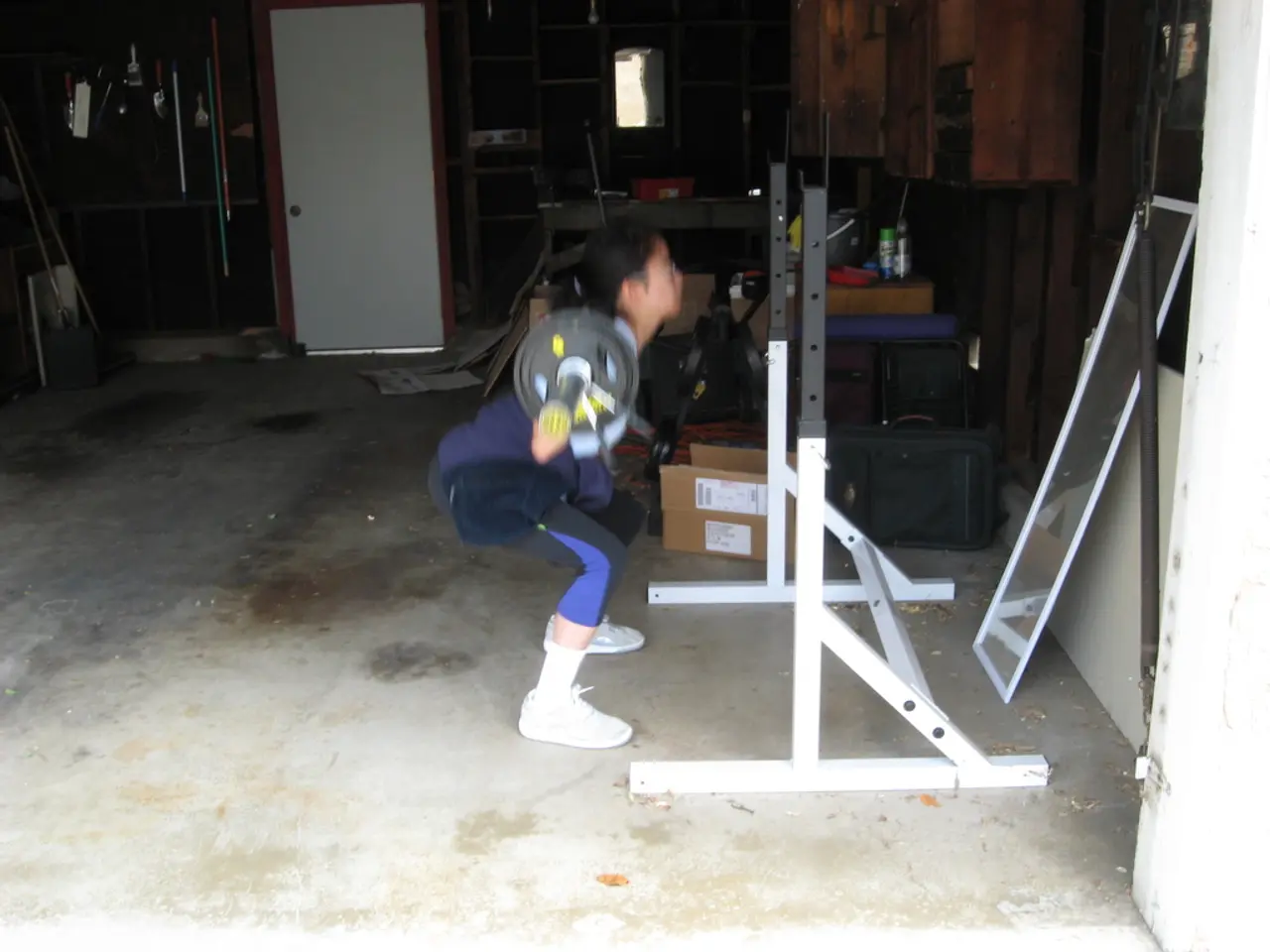Effortlessly strengthen without gear: A beginner-friendly low-impact workout regimen for growth
Isometric training, a method that involves the static contraction of a muscle without any joint movement, is gaining popularity among fitness enthusiasts and personal trainers alike. This low-impact, accessible training technique offers numerous benefits for both beginners and advanced gym-goers.
Rowan Clift, a personal trainer who works with individuals and leads classes at The Gym Group in West Hampstead, as well as collaborating with Freeletics, an AI-led fitness app offering personalized fitness programs, is a proponent of isometric training. Clift emphasizes the versatility of isometric exercises, stating that they can help build foundational strength and tendon repair for beginners, while also aiding in neuromuscular adaptations and force development for advanced gym-goers.
Benefits of Isometric Training
Isometric training provides several key advantages:
- Muscle, Tendon, and Ligament Repair and Growth: Studies have found that isometric training stimulates muscle, tendon, and ligament repair and growth, a phenomenon previously thought impossible for tendons and ligaments [1].
- Improved Neuromuscular Adaptations: Isometric training leads to better force output and rapid force development, thanks to improved neuromuscular adaptations [2][4].
- Cardiovascular Health Improvements: Isometric training has been shown to reduce blood pressure and improve cardiovascular health, making it a valuable non-pharmacological intervention for hypertension [5].
- Time-Efficiency and Cost-Effectiveness: Isometric training is time-efficient and cost-effective, requiring minimal equipment and being easy to perform at home or in clinical settings [5].
- Injury Rehabilitation: Isometric training is suitable for injury rehabilitation and maintaining strength without joint movement, reducing aggravation for injured individuals [1][3].
Isometric Exercises for Beginners
For those new to exercise, older adults, or those with metabolic conditions, isometric exercises are an accessible and effective option. Here are four examples of isometric exercises suitable for beginners:
- Plank: The plank, another isometric exercise, involves holding a straight-arm or forearm plank position. This engages the core, shoulders, and glutes without joint movement [1].
- Wall Sit: The wall sit involves sitting against a wall with knees at approximately 90 degrees. This strengthens the thighs and glutes statically [1][5].
- Isometric Step-Up Hold: The isometric step-up hold involves holding a static position with one foot on a step platform. This improves single-leg strength and stability [2].
- Hand Press (Palms Pressed Together): The hand press, where one presses their hands against each other, contracts the chest and arm muscles without movement [3].
These exercises train muscle endurance and strength while being gentle on joints, making them ideal for beginners building base strength or recovering from injury.
Conclusion
Isometric training offers diverse benefits, from rehabilitation to advanced performance improvements, and is adaptable to all fitness levels. With simple, effective exercises for beginners, it's no wonder that isometric training is becoming increasingly popular. To perform a calf raise hold, stand on a flat surface with feet shoulder-width apart, engage the core, lift heels off the floor, and hold the position. Improvement in isometric holds can be easily measured by holding the position for longer.
Read also:
- Exploring Botox as a Treatment for Interstitial Cystitis: Insights, Adverse Effects, and Further Details
- Linking brain weakness and cognitive decline: An examination of the potential relationship
- Is it Possible that Stem Cells Improve Joint Durability and Mobility during Senior Years?
- Is a Measles Booster Vaccination Required? You Might Be Shocked by the Response





